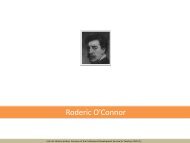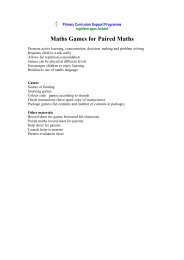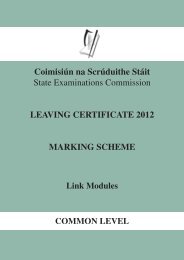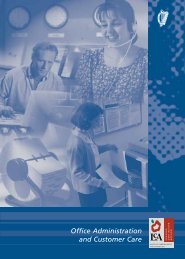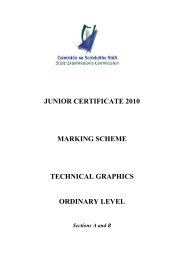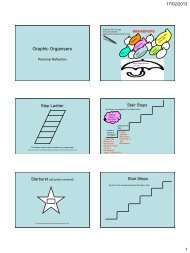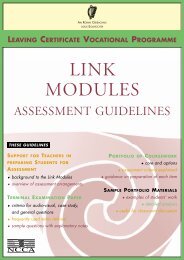What is Four in Balance? - PDST
What is Four in Balance? - PDST
What is Four in Balance? - PDST
You also want an ePaper? Increase the reach of your titles
YUMPU automatically turns print PDFs into web optimized ePapers that Google loves.
6 - Digital learn<strong>in</strong>g materials6Digital learn<strong>in</strong>g materialsLittle has changed <strong>in</strong> recent years when it comes to the use of digitallearn<strong>in</strong>g materials. Teachers anticipate that such use will <strong>in</strong>creaseconsiderably <strong>in</strong> the years ahead. A grow<strong>in</strong>g number of teachers evenbelieve that they will develop their own digital learn<strong>in</strong>g materialsand make them available to other teachers.We def<strong>in</strong>e “digital learn<strong>in</strong>g materials” fairly broadly. One of the keyfeatures <strong>is</strong> that a computer or other electronic device <strong>is</strong> required touse the material (Leendertse, 2011). It can cons<strong>is</strong>t of material createdespecially for educational purposes (for example a practice program), or<strong>in</strong>formal content (for example a video clip retrieved from the Internet).We also <strong>in</strong>clude word process<strong>in</strong>g and similar programs. Roughly speak<strong>in</strong>g,digital learn<strong>in</strong>g material <strong>is</strong> any computer-based material that can be usedfor learn<strong>in</strong>g.Th<strong>is</strong> chapter surveys the current state of affairs with respect to digitallearn<strong>in</strong>g materials by look<strong>in</strong>g at three <strong>in</strong>dicators:1. the use of various types of computer programs (Section 6.1)2. the percentage of learn<strong>in</strong>g materials that are digital (Section 6.2)3. the source of the digital material (Section 6.3)6.1 Computer programsWe can summarize the use of computer programs <strong>in</strong> teach<strong>in</strong>g <strong>in</strong> fivepo<strong>in</strong>ts:1. Most teachers use computer programs that match their ex<strong>is</strong>t<strong>in</strong>g work<strong>in</strong>gmethods or that fit <strong>in</strong> easily with those methods. Teachers select digitallearn<strong>in</strong>g materials based on their own pedagogical views; <strong>in</strong> otherwords, they select material that supports their views (see Chapter 1).2. Teachers are still us<strong>in</strong>g the same types of computer program that theyused <strong>in</strong> previous years. The overall picture for 2011 <strong>is</strong> comparable tolast year’s and virtually identical to the previous years (Figure 6.1).3. The most popular computer programs were not developed specificallyfor educational purposes. They are programs without content, for53



